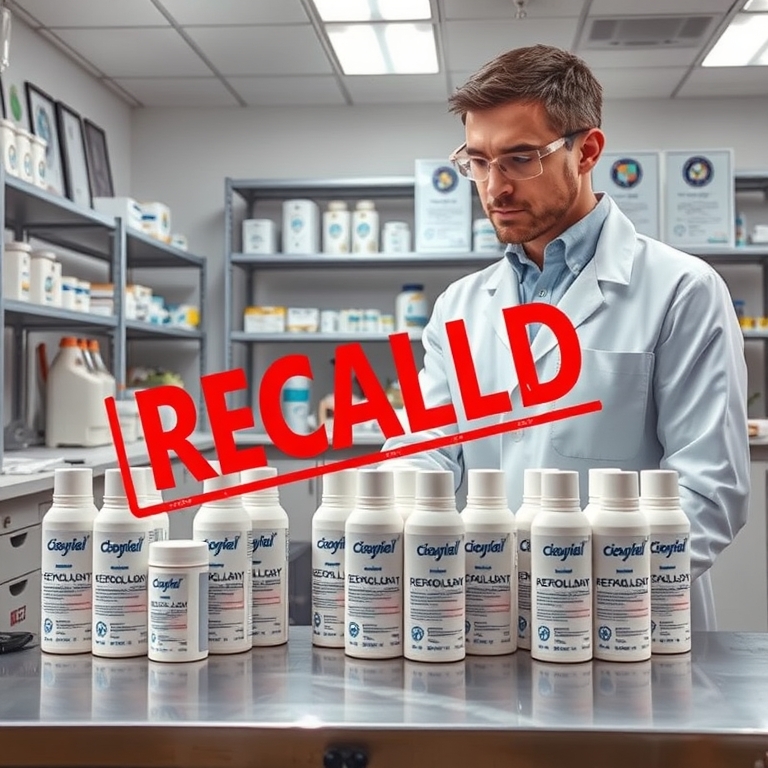In an unexpected move that has rippled through the personal care industry, the U.S. Food and Drug Administration (FDA) has issued a recall for a popular deodorant brand, citing potential health risks. This decision has not only stirred concerns among consumers but also sent shockwaves through the market, as stakeholders try to assess the broader implications of this regulatory action.
The deodorant in question, which has enjoyed a longstanding reputation for its effectiveness and affordability, is now under scrutiny after the FDA’s findings indicated possible contamination with substances known to pose health risks. Although the specific details of these substances have not been fully disclosed, preliminary reports suggest the presence of chemicals that could be carcinogenic or otherwise harmful when absorbed through the skin over prolonged use.
The recall, which affects millions of units distributed nationwide, has prompted a flurry of activity among retailers, who are now tasked with removing the product from shelves and processing returns. This logistical challenge is compounded by the need to communicate effectively with consumers who may have already purchased and used the product. Companies are deploying multiple channels, including social media, email notifications, and in-store signage, to ensure that customers are aware of the recall and understand the steps they should take.
For consumers, the news has sparked a mixture of alarm and frustration. Many have expressed concerns about the potential health implications of using the deodorant, while others are dismayed at the prospect of having to find alternative products that meet their personal care needs. The recall also underscores the broader issue of product safety in the personal care industry, raising questions about the regulatory processes in place to prevent such issues from arising in the first place.
Industry analysts are closely monitoring the situation, as the recall could have significant implications for the brand’s parent company, which has historically been a leader in the personal care market. The company’s stock price saw an immediate dip following the announcement, reflecting investor concerns about potential losses and the impact on brand reputation. In response, the company has issued a statement expressing its commitment to consumer safety and its intention to cooperate fully with the FDA to resolve the issue promptly. The statement also emphasized the company’s proactive measures, including a comprehensive review of its manufacturing processes and supply chain.
Legal experts suggest that the recall could lead to a wave of consumer lawsuits, as individuals who believe they have been harmed by the product seek compensation. The potential for litigation adds another layer of complexity to the situation, as the company may face significant legal costs and damages. Moreover, the recall serves as a stark reminder of the importance of rigorous quality control and testing standards in the manufacturing of personal care products.
In the wake of these developments, other companies within the industry are likely reevaluating their own processes and standards to avoid a similar fate. The recall has highlighted vulnerabilities in supply chain management and quality assurance, prompting a reassessment of the protocols that govern product safety. Industry leaders are likely to invest in enhanced testing technologies and more stringent oversight to mitigate risks and restore consumer confidence.
From a regulatory perspective, the FDA’s decisive action is seen as a reaffirmation of its role in safeguarding public health. The agency’s swift response and transparent communication are being lauded by consumer advocacy groups, who have long called for more robust oversight of the personal care sector. This incident may lead to a broader conversation about regulatory reforms and the need for updated guidelines that reflect the evolving complexities of modern manufacturing processes.
For the brand at the center of the recall, the road to recovery will be challenging but not insurmountable. Successful navigation of this crisis will depend on the company’s ability to rebuild trust with consumers and stakeholders. This will likely involve a multifaceted approach, including transparent communication, visible improvements in product safety measures, and perhaps a rebranding effort to distance the company from the negative associations of the recall.
In conclusion, the FDA’s recall of a popular deodorant brand over potential health risks serves as a critical reminder of the importance of vigilance in product safety. As the personal care industry grapples with the fallout, the incident underscores the need for stringent regulations and robust quality assurance mechanisms to protect consumers. While the affected brand faces significant challenges ahead, the broader industry has an opportunity to learn from this event and implement changes that will enhance consumer safety and confidence in the future.

Leave a Reply